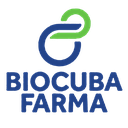Executive Secretary

VIII International Symposium on Chemistry and Pharmaceutical Sciences
SIIQ
XIII Conference "Chemical Engineering: Development, potentials and challenges"
Abstract
Recombinant Human Epidermal Growth Factor is a protein capable of increasing the speed of wound and ulcer healing in different tissues of the human body. Currently at the Center for Genetic Engineering and Biotechnology, there is an increased fermentation process, using the yeast Saccharomyces cerevisiae, to obtain this recombinant protein at 5 L level. The culture medium can be questioned by first world regulatory agencies, since it contains bacteriological peptone of animal origin. For this reason, experimental studies were developed aimed at substituting the animal peptone for peptone of plant origin in the culture medium, complying with the established quality and safety requirements. Subsequently, experimental designs were carried out at shaker scale, to evaluate the influence of amino acids as a supplement to complement the vegetable peptone in the initial medium. In this way, an improved fermentation process was established, on a 5 L scale, using vegetable peptone, supplemented with the amino acids histidine, leucine, proline, methionine, lysine, glycine and cysteine in the culture medium, with adjustments in the operating parameters, without affecting the yields of the current process (cell growth greater than 80 g/L, specific protein concentration greater than 48 µg/mL and total protein greater than 0.45 mg/mL), allowing in turn to meet , with the quality specifications of the intermediate product.
Resumen
El Factor de Crecimiento Epidérmico humano recombinante es una proteína capaz de incrementar la velocidad de cicatrización de heridas y úlceras en diferentes tejidos del cuerpo humano. Actualmente en el Centro de Ingeniería Genética y Biotecnología, se cuenta con un proceso fermentativo incrementado, utilizando la levadura Saccharomyces cerevisiae, para la obtención de esta proteína recombinante a escala de 5 L. El medio de cultivo puede ser cuestionado por entidades regulatorias del primer mundo, ya que contiene peptona bacteriológica de procedencia animal. Por tal motivo, se desarrollaron estudios experimentales encaminados a sustituir en el medio, la peptona animal por peptona de origen vegetal, cumpliendo con los requerimientos de calidad y seguridad establecidos. Posteriormente, se realizaron diseños de experimentos a nivel de zaranda, para evaluar la influencia de los aminoácidos como suplemento para complementar la peptona vegetal en el medio inicial. De esta forma, se estableció un proceso de fermentación mejorado, a escala de 5 L, empleando peptona vegetal, suplementada con los aminoácidos histidina, leucina, prolina, metionina, lisina, glicina y cisteína en el medio de cultivo, con ajustes en las condiciones de operación, sin afectar los rendimientos del proceso actual (crecimiento celular mayor a 80 g/L, concentración de proteína específica superior a 48 µg/mL y de proteínas totales mayor a 0,45 mg/mL), permitiendo a su vez cumplir, con las especificaciones de calidad del producto intermedio.
About The Speaker

Ing. Chabelly Cabañas

Discussion




